Salo is a great piece of pork charcuterie similar to Italian lardo. Think of it as slabs fat cured with a dry salt cure, sliced paper thin so it melts in your mouth.
I learned about it from my Ukrainian friend Olena when I asked her what pork cuts I should take from two pigs I was going to butcher.
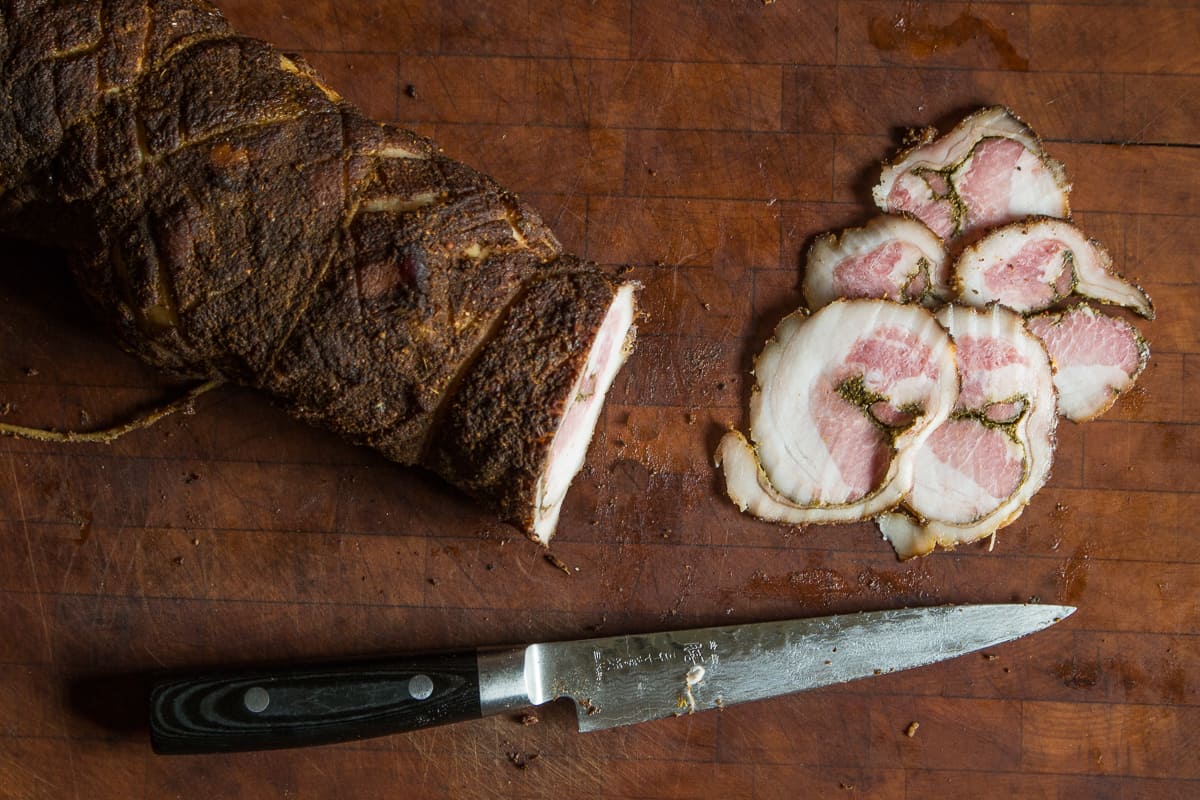
About
Salo is a famous Ukranian delicacy typically made from pure white pork fat back or belly, sliced paper thin and eaten like ham with rye bread. There's lots of different versions and ways to make it.
It could be salted and dried like lardo, cured and boiled, or, cured and smoked, like the one I'm sharing with you here that I knew would be dependably delicious.
According to the Guardian, it's so popular in fact, the it has multiple entries into the Ukranian book of records, including the worlds first "pork and salo monument" and a 76m long salo sandwich. There's even a salo museum.
I've cured my share of pork fat, and after reading a few examples, I could see into the future a bit and planned accordingly to make sure I got an end product I'd really like.
I like and respect the dry cured pork fats like lardo, but it's something I can only take in small amounts, as unless the pork fat is cooked, the texture can be a little rubbery for some people. Cured, smoked, or otherwise slow cooked pork fat is another thing entirely though, and it can make a sandwich or charcuterie plate of the gods.
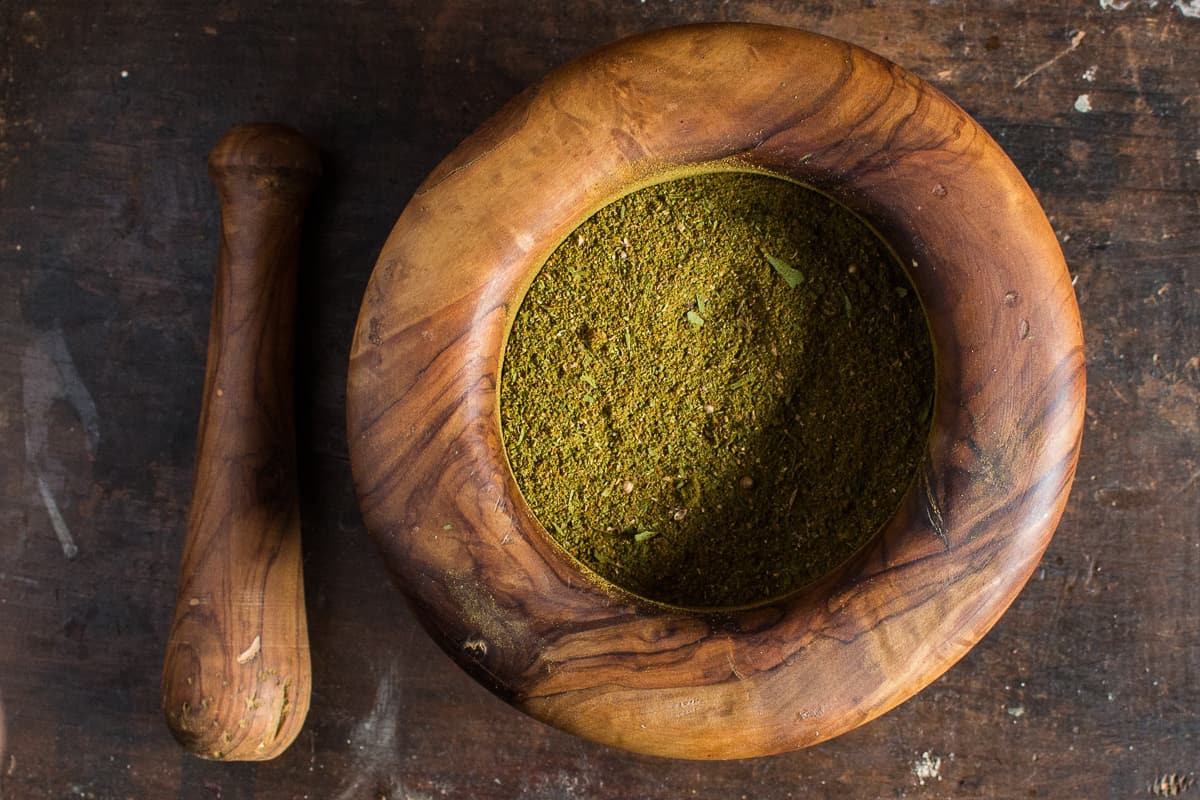
Another tweak I made was using a marbled fatty pork shoulder, instead of pure pork fat. I had to skin the pigs, which removed some fat in the process, and most of the pig fat we donated to a friend to render lard. I ended up taking a cut of fatty pork shoulder.
A lot of good, homemade hams can be made from pork shoulder. Pork butt bacon, also known as buckboard bacon and tasso ham are two examples. You can also cure a shoulder as pictured below with traditional bacon cure like I do with venison bacon.
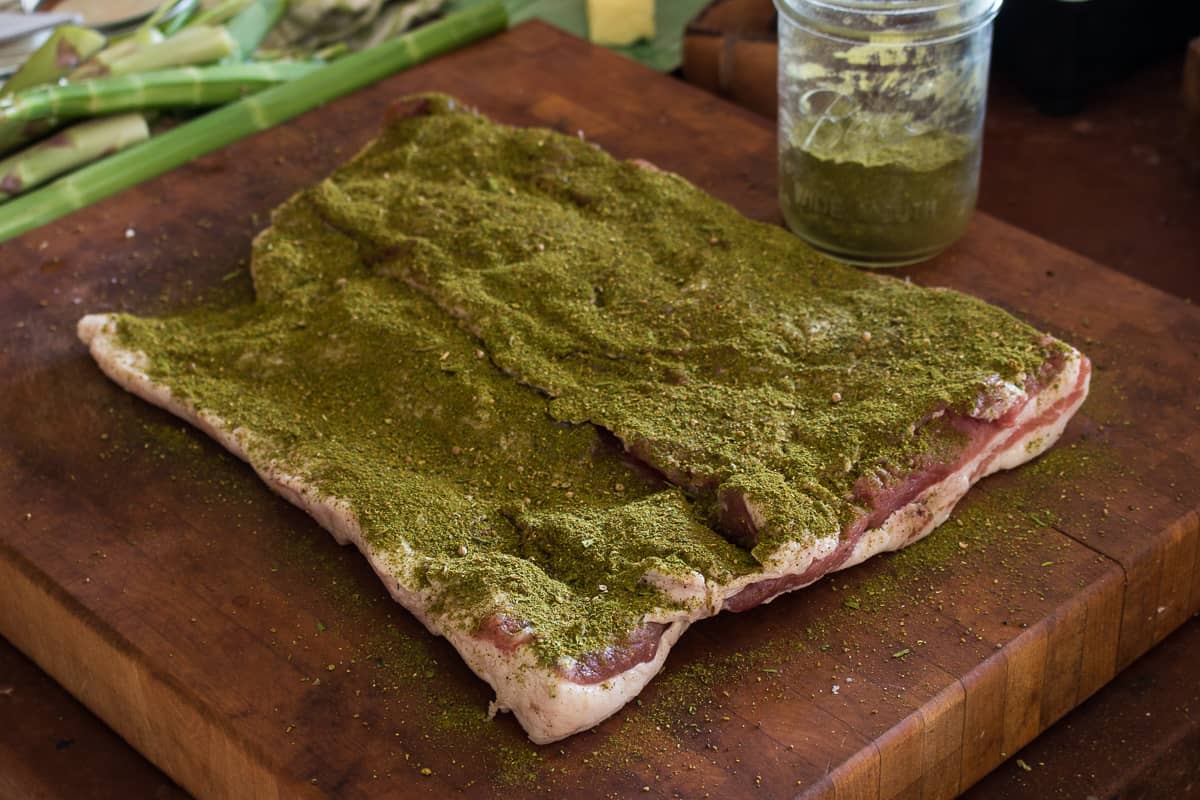
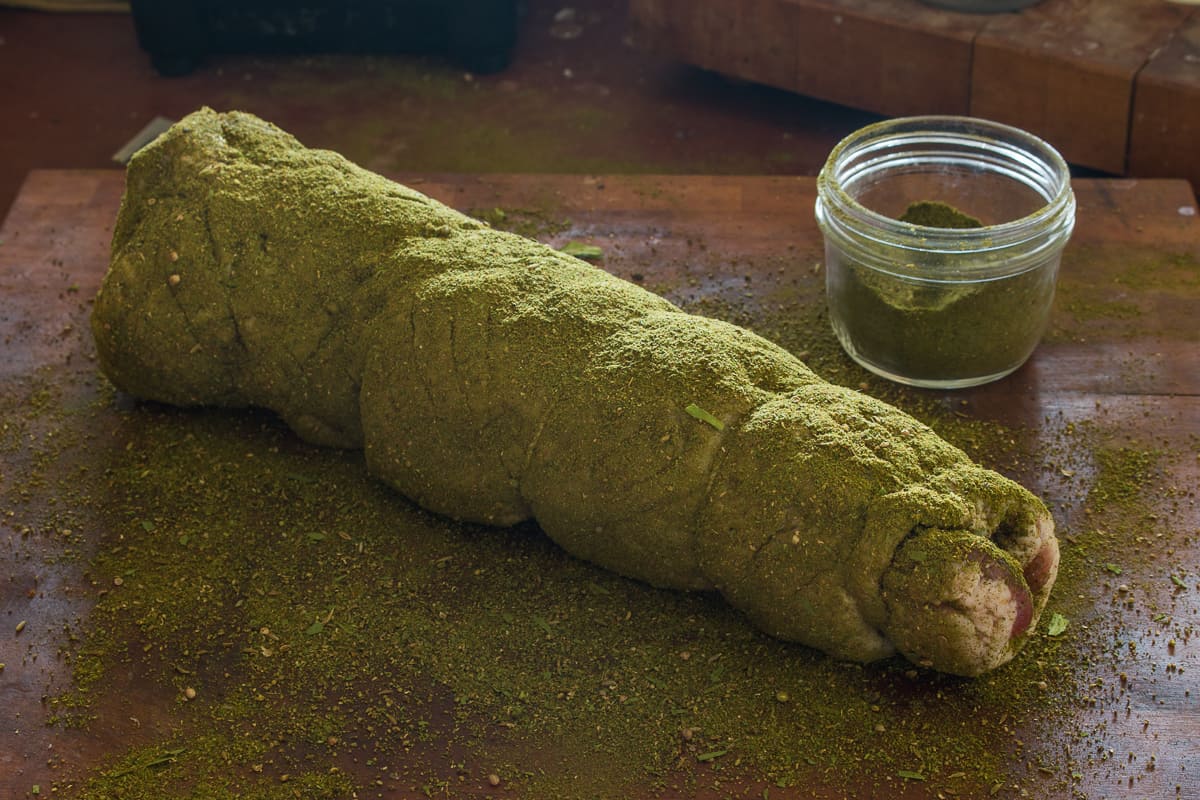
Basic method
I pounded the fat cap, cured it with 1% of it's weight in salt, along with some pink salt or Prague powder (sodium nitrite) for a few days. After the initial cure had penetrated, I wiped it clean, and, following the tradition of some of the salo's that I'd seen, applied a thick coating of rub to the entire thing.
For the rub, I used my dried ramp leaf rub (see that recipe here). You could use all kinds of flavors and seasonings though, so think of mine as just an example.
If you don't have ramp leaves you can substitute paprika in the rub for dry curing the meat, which is actually more traditional.
Another traditional variation involves meat larded with garlic.
How to enjoy
Since I shared this, a number of Ukrainian friends reached out to help me get the best from my fatty pork. Here's a few of their suggestions. A open-faced sandwich on bread with horseradish and onion is traditional.
- Serve thin pieces of salo on open faced sandwich on brown bread with horseradish and thinly shaved onion
- Millet porridge with fried onions and salo (I've been told it's an ancient dish that should cook in a clay pot)
- Mashed into a spread with garlic, dill, or other herbs and spread on black bread
- Mixed in and gently rendered with fried potatoes
- Aforementioned open faced sandwich served with steaming a piping hot bowl of borcht
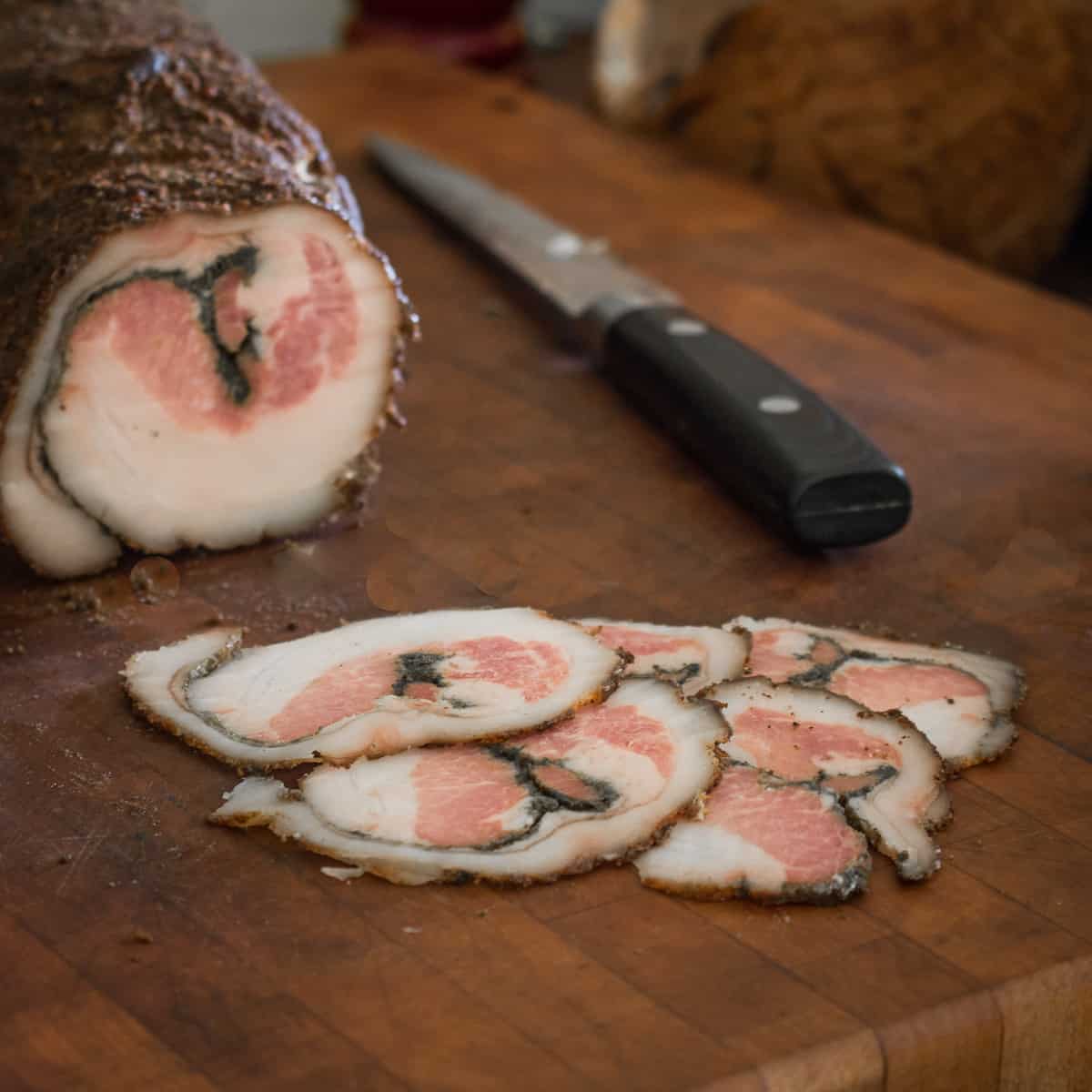
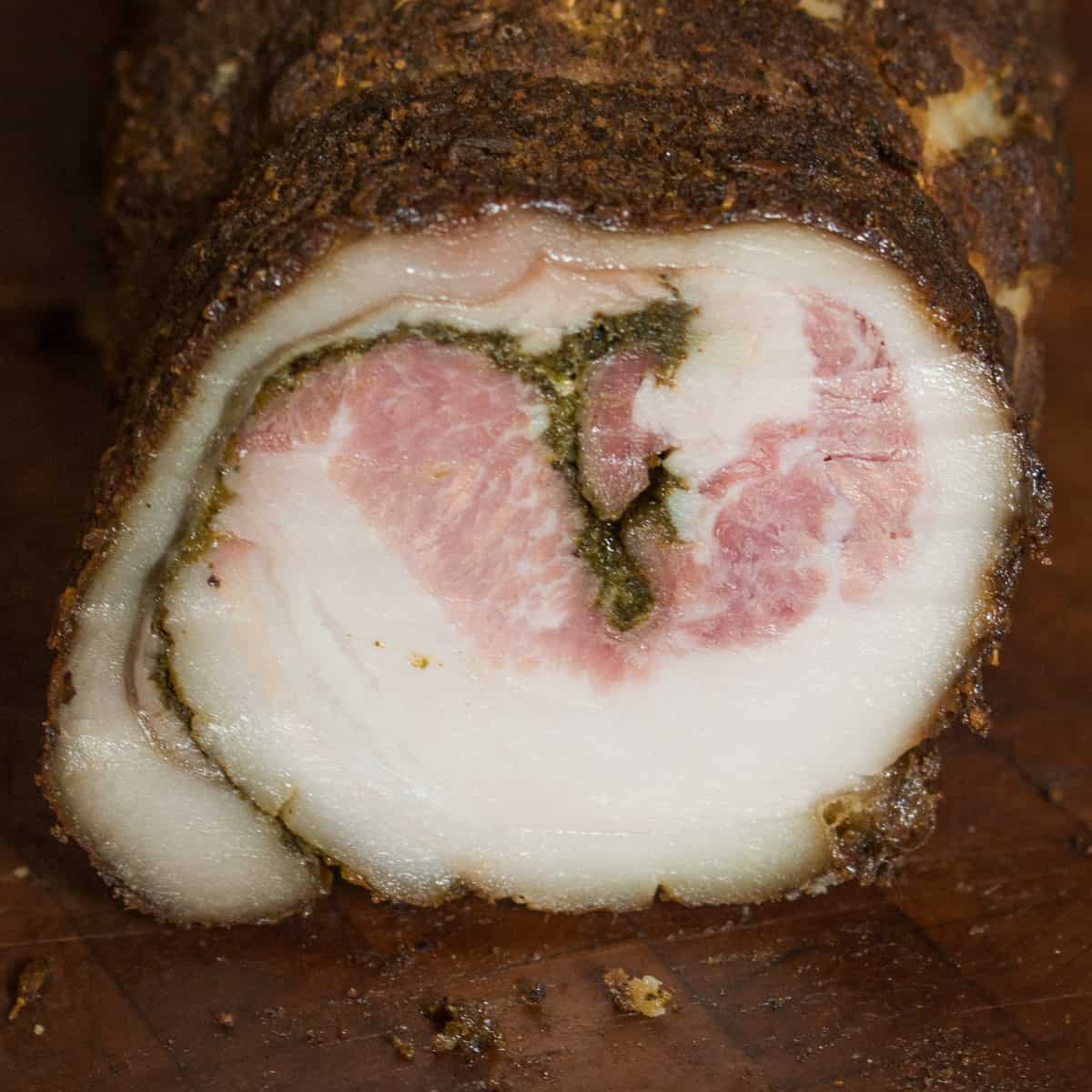
Pork cuts you could use
You need a very fatty cut of pork. Ask a butcher to get you a fat cap or backfat, but another great alternative is just to use pork belly, especially if it's your first time.
Pork belly is fatty, but it's not pure fat, making it a good doorway for a first time salo journey, which, if you smoke it like I did, isn't much different from bacon except for the fact that it's eaten raw like ham as opposed to cooking crisp.

Smoked Cured Pork Shoulder, Inspired by Ukrainian Salo
Equipment
- 1 butchers twine
- 1 Smoker optional
Ingredients
Meat
- 2 lbs very fatty pork ribs, fat cap, belly, or fatback
Salt Cure (see note)
- 30 grams kosher salt
- ½ teaspoon pink salt / sodium nitrite available from butcherpacker.com
Final Rub
- Dried ramp leaf rub as needed, a couple tablespoons
Dry Rub
- 1.5 oz (6 Tbsp) sweet paprika
- 3 grams (1 tsp) black pepper preferably whole corns
- 14 grams (2 Tbsp) cumin seed
- 7 grams (1 Tbsp) fennel seed
- 14 grams (2 Tbsp) coriander seed
Instructions
Rub
- Grind the whole spices and mix with the paprika.
Curing the meat
- Mix the salt and pink salt.
- Pound the meat all over with a mallet to give it the shape of a rectangle that can be rolled up like a jelly roll to make for attractive slicing. Trim the meat as needed, if you have to cut or butterfly with a knife. The jelly roll aspect of the meat is part of it's attractiveness.
- Wearing gloves, rub the meat with the salts. Rub the cure in well, massaging it in to ensure proper seasoning. Let sit in the cure for 5 days wrapped in a bag, or vacuum sealed using the marinate setting, turning occasionally to distribute the juices.
Cooking / Smoking
- After 5 days, wipe the meat completely dry, rub with the spice rub all over if using, then roll into a tight log like a jelly roll with butchers twine and smoke at 225 F for 3 hours. Chill
- You can also cook and brown the salo like bacon, but know that it will be slightly more salty.
Serving
- Serve the salo sliced paper thin with pieces of toasted rye bread as part of a larger meal or as a snack.
Notes
- 6 oz dark brown sugar
- 3 oz kosher salt or fine salt
- ½ teaspoon pink salt / sodium nitrite (available from butcherpacker.com)

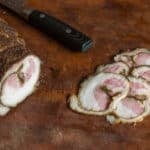
Hammer
Hey Alan, made my roll. Used boneless pork butt from which I managed to make 3 flats to make a roll.
See image of final product
https://imgur.com/a/DAS7YGE
Tasted like fancy ham with loads of spices. I may just make variation of this but using pork loin.
Alan Bergo
Thanks, this looks great.
Hammer
Alan, for cure with brown sugar amount of salt 3 oz for 2lb is too much.
3oz is 85g. Unless I am missing something.
Alan Bergo
Hi Hammer, what you're missing is that when salt and sugar are combined, the salt is less noticeable. I know it seems counter-intuitive. Most of the cure is washed off before aging. Just trust me here, this was developed for commercial charcuterie on a project I worked on.
Hammer
Thanks Alan.
I love the idea of the roll, but every boneless pork shoulder I looked at and so as bone in they don’t have as much fat as your cut. I just assume thats because of the pig you got? I am just looking to make the best salo for my ukranian friends and this recipe appealed to me.
Alan Bergo
It's possible the images could be misleading you a bit here. This was a basic pork shoulder from a butcher, it wasn't a lard-pig, which can have hilarious amounts of fat (actually perfect for this, in reality). most pork shoulders will have a thicker layer of fat in some areas, and that is what's shown in the images. Sliced thin it will all be delicious either way.